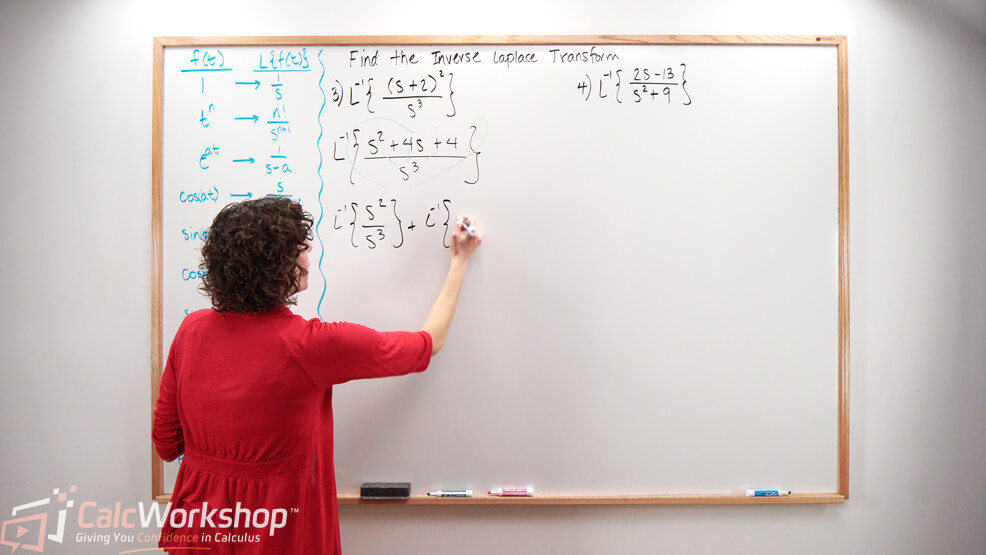So, the Laplace transform is an integral transformation that makes electrical and mechanical problems easier to solve.

Jenn, Founder Calcworkshop®, 15+ Years Experience (Licensed & Certified Teacher)
How?
By taking a time-domain function with
But what if we are given the frequency-domain function in terms of s and we desire to know the time-domain function?
What do we do then?
We employ the Inverse Laplace Transform and reconstruct the original function in terms of t.
Laplace Transform Table
Let’s recall our table of Laplace Transform that we learned from our previous lesson.
Typically, we work from the left-side of the table to produce the right-side. But in this lesson, we will go in reverse direction by trying to match the Laplace Transform to one of the functions.
If
In other words, the inverse Laplace transformation recovers the continuous function
Example 1: Basic Inverse Laplace Transform
Let’s look at an example.
Evaluate
First, we will match the form to the Laplace transforms table to be:
This indicates to us that all we need to do is identify a, which is 5.
Next, we must recognize that the continuous function that produces such a transformation is of the form
So,
Let’s try another one.
Example 2: Inverse Laplace Transform with Adjustments
Evaluate
First, we will match the form to the Laplace transforms table to be:
This indicates to us that we need to find
Next, we must recognize that the continuous function that produces such a transformation is of the form
But because our numeartor in our tranform is not
See, not too bad, right?
Additional Techniques and Considerations
Now, sometimes the inverse transform will be straight forward, and other times we will need to have a little ingenuity and use techniques such as Completing the Square and Partial Fractions, for which this lesson will rely heavily upon, in order to recover the continuous function
In fact, Paul’s Online Notes even makes the statement, “Partial fractions are a fact of life when using Laplace transforms to solve differential equations.”
Next Steps
In the video, you’ll…
- Refresh your understanding of partial fractions to efficiently “fix up” the function of s to match the table
- Work through ten detailed examples to become proficient in evaluating inverse Laplace transforms
- Gain a deeper understanding of the concepts explained in the article by watching the video
- Visualize the step-by-step process with clear examples and explanations
Let’s go!
Video Tutorial w/ Full Lesson & Detailed Examples

Get access to all the courses and over 450 HD videos with your subscription
Monthly and Yearly Plans Available
Still wondering if CalcWorkshop is right for you?
Take a Tour and find out how a membership can take the struggle out of learning math.